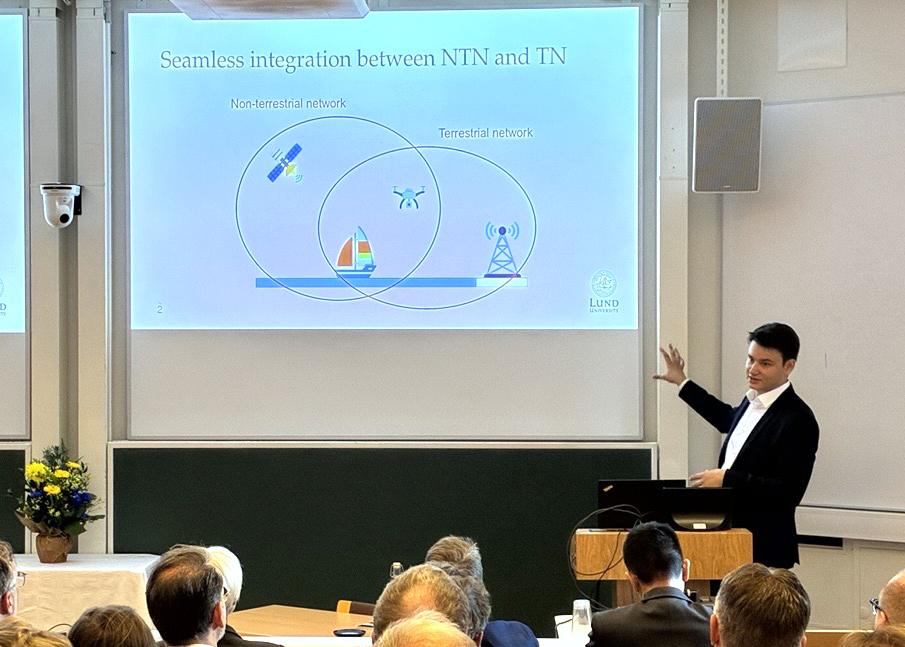First there was maritime communication
The very first form of wireless communication was maritime; to be able to communicate with vessels far out on the oceans, radio transmissions have been used from late 1890’s. Today, there is a need for reliable connectivity at sea for positioning, and the future applications of remote pilotage, search and rescue, and autonomous shipping.
Susanna Lönnqvist – Published 1 July 2025

Michiel Sandra has done his PhD in the improvement of the maritime communication systems through the use of multiple antennas. Maritime communication is truly long range, over vast distances, and the environment has special characteristics that affect radio communication. The sea is rough, forming hills and valleys, modern cargo ships are massive, moving objects, different heights in the atmosphere affect radio waves in different manners, and to top it off the Earth’s round curvature needs to be considered. Michiel Sandra has researched the use of multiple antennas to improve connectivity and reliability of positioning. As part of the research he developed a so-called channel sounder, a system that can measure the wireless properties of the maritime environment. Since the performance of a radio network is dependent on the properties of the environment where the radio waves are propagating, it is pivotal to perform channel sounding experiments to be able to estimate how the radio channel behaves, and plan for your antenna placements accordingly.
Modern day 5G technology uses so called massive MIMO-arrays; multiple-input multiple-output antenna arrays where up to hundreds of antennas are deployed for stable and reliable wireless connections. Michiel Sandra’s work investigated how many antennas are required for improvement of communication in the maritime channel, and their spatial configuration. It shows that five antennas stacked on top of each other counter some of the challenges of the maritime environment, minimizing fading of the radio signal and assuring long range communication. The thesis provides practical guidelines for deploying a low number of antennas, given certain requirements. The thesis contributes to better overall understanding of the maritime radio channel, based on real life radio channel measurements in harbor and open sea environments.

Opponent Torbjörn Ekman, Norwegian University of Science and Technology NTNU, shows a picture of maritime connectivity ranges on the planet. Photo: Susanna Lönnqvist
Michiel Sandra
Thesis in Communications Engineering
Michiel Sandra has defended his thesis in Communications Engineering: "Exploiting multiple antennas in maritime radio channels".
Exploiting multiple antennas in maritime radio channels - Lund University
